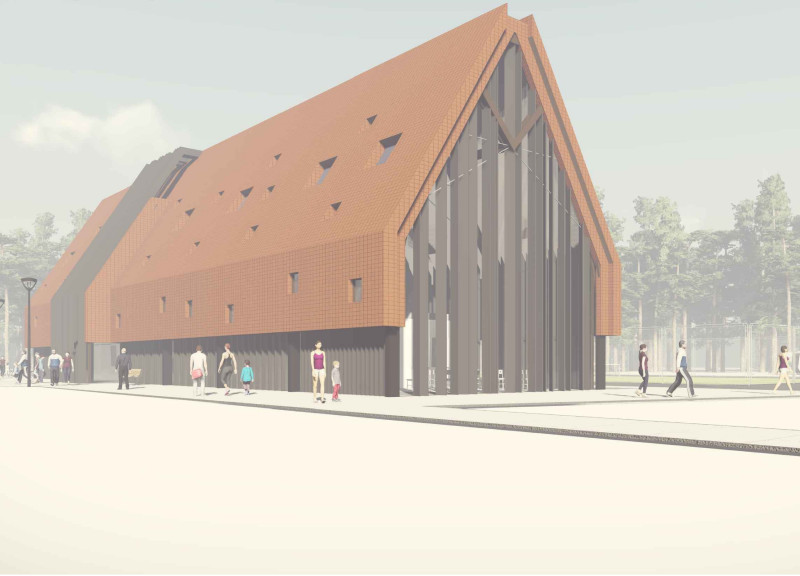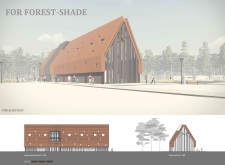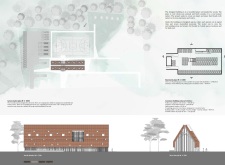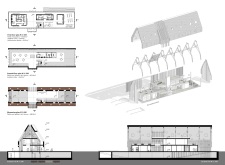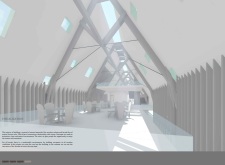5 key facts about this project
At its core, the project represents a harmonious blend of architecture and the natural world. The design is characterized by a series of angular rooflines that mimic the silhouette of surrounding tree canopies. This choice not only forms a visual connection with the landscape but also provides functional benefits such as natural shading and rainwater management. The building serves multiple purposes, from hosting community events to providing spaces for sports and leisure activities. It includes areas such as galleries, cafés, and flexible event rooms, all designed to accommodate both social gatherings and individual reflection.
One of the essential aspects of "For Forest-Shade" is its commitment to materiality, which plays a significant role in conveying the project's intent. The use of wood is predominant throughout the structure, offering warmth and a tactile connection to the environment. This choice reflects traditional timber construction methods while providing modern durability. Complementing the wood, natural brown-colored facade tiles are employed to enhance the aesthetic appeal and ensure longevity. Expansive glass windows and openings are strategically placed to maximize natural light and provide panoramic views of the forest, creating a seamless transition between indoor and outdoor spaces.
The architectural layout of the project features a well-considered organization of spaces across multiple levels. The first floor is designated for public areas, ensuring ease of access for visitors. This level contains galleries and community-oriented facilities that promote engagement and social interaction. The ground floor is designed as a flexible open space meant for events and recreational activities, while the basement provides additional space that is accessible for individuals with disabilities. This thoughtful arrangement prioritizes inclusivity, allowing all members of the community to enjoy the facility.
In addition to the functional aspects, "For Forest-Shade" incorporates unique design approaches that further enhance its overall contribution to the community. Natural ventilation is achieved through carefully positioned skylights and operable windows, facilitating air circulation and reducing the reliance on mechanical systems. This not only promotes energy efficiency but also contributes to a healthier indoor environment. Furthermore, the outdoor spaces surrounding the building have been meticulously planned, offering designated campgrounds, recreational courts, and landscaped pathways that encourage outdoor activities and interaction with nature.
The project is distinguished by its focus on sustainability, as it employs practices that address environmental impact while creating a welcoming and usable space. The design encompasses seasonal adaptability, ensuring that the building remains functional throughout the year. The consideration of site-specific conditions, such as sunlight exposure and wind patterns, reflects a thorough understanding of environmental dynamics.
As you explore the presentation of this architectural project, take the opportunity to delve into the detailed architectural plans, sections, and designs that underpin the vision of "For Forest-Shade." The insights gained from these elements can deepen your appreciation for the project's thoughtful integration of architecture with its natural setting. This exploration invites you to engage with the architectural ideas that inform the design, revealing a comprehensive approach to creating a community-oriented space that respects and enhances the environment.


